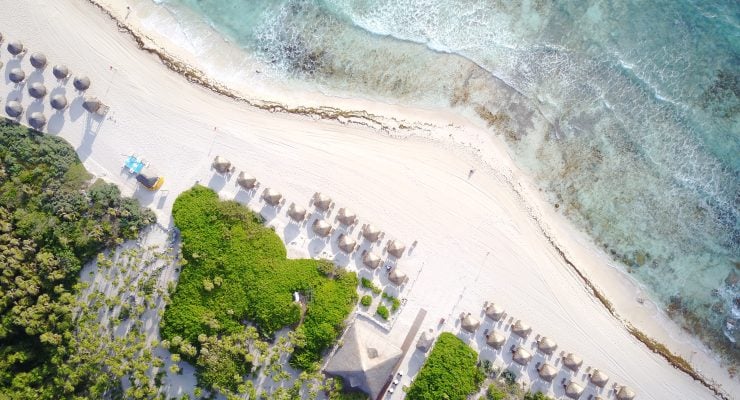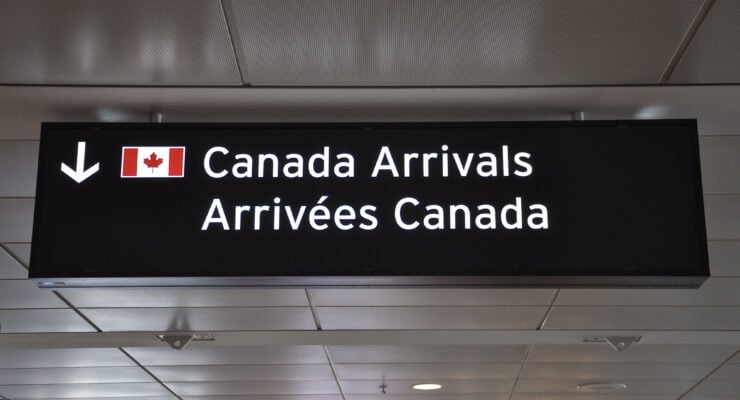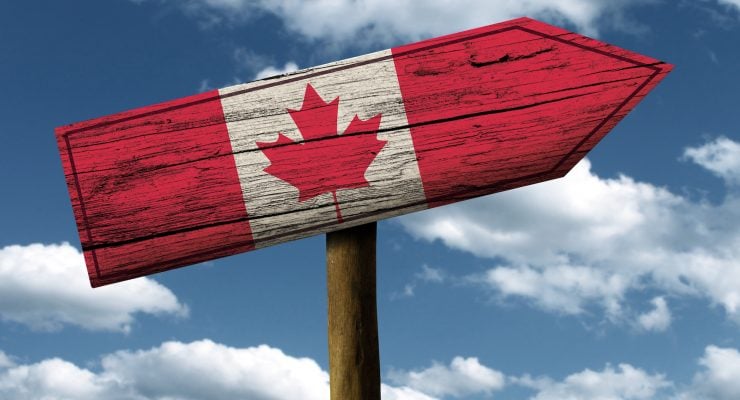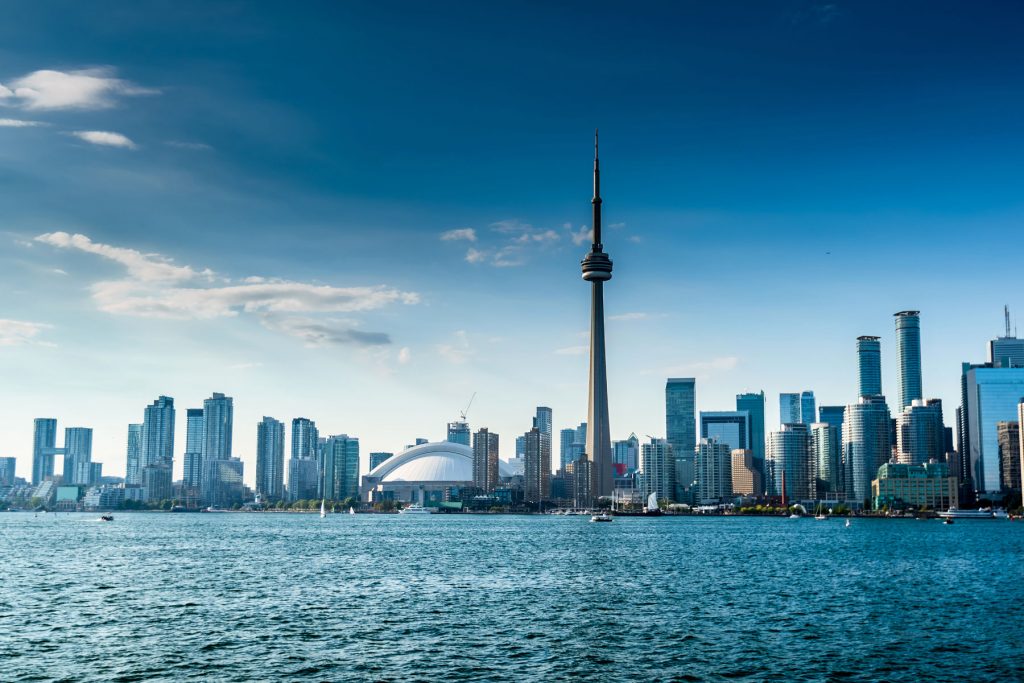All about the working holiday in Canada!
We’ve been recommending Globe WHV since 2005 (medical expenses, hospitalization, repatriation).
Contents
Between 18 and 30 years old (35 for some nationalities)
A valid passport for the entire duration of your working holiday.
At least CA$2,500 or equivalent in another currency.
This must be your first WHV to Canada (some exceptions apply)
Must cover medical care, hospitalisation and repatriation.
If you meet all of the requirements, now all you need is… luck.
01. What is International Experience Canada (IEC)?
There are three IEC work permit categories: Working Holiday (often referred to as a “WHV”), Young Professionals and International Co-op (Internship).
Depending on your country of citizenship, you can be eligible for one, two or up to three IEC permits—sometimes even all three of them. For instance, Danish citizens are only eligible for the Working Holiday permit, Swiss citizens are eligible for the Young Professionals and the International Co-op (Internship) permits only and Australian citizens are eligible for all three IEC permits.
02. What’s the IEC Working Holiday permit for Canada?
Note: Italian citizens are eligible for a six-month Working Holiday with the right to work in Canada. They can then extend their stay for another six months but they won’t have the right to work for the second six months.
The Young Professionals and International Co-op (Internship) permits are employer-specific work permits. You must respect the conditions on your work permit, which include the name of the employer you can work for, how long you can work and the location where you can work (if applicable).
03. Annual Working Holiday permit quota
The number of “spots” is reviewed every year and can even change during an ongoing IEC season. There are usually more candidates than permits available, so candidates are selected randomly from a “pool.”
Note: There’s no quota system in place for Australian citizens—lucky!
04. When to apply for a Canada IEC Working Holiday
05. Working Holiday application process overview
Step 1 – Submit your profile to the Working Holiday pool. At this stage, there are no fees to pay. Create an IRCC account, then complete and submit your profile to the Working Holiday pool. You only need to submit your profile once—it will stay in the pool until it’s drawn or until the end of the IEC season.
Step 2 – This step is a waiting game, as you’re keeping your fingers crossed to receive an Invitation to Apply (ITA). The ITA is the key to move onto the next step, i.e. the application for a Working Holiday permit. ITAs are sent randomly during “rounds of invitations.” Remember that it all comes down to luck; profiles aren’t reviewed based on work experience, skills, etc. If you do not receive an ITA by the end of the IEC season, you can submit your profile to a pool again the following year. If you do receive an ITA, you have 10 days to accept or decline it—if you do accept it, you’re moving onto step 3.
Step 3 – You have 20 days to submit your completed application, provide supporting documents and pay the CA$357 fee after accepting an Invitation to apply. Don’t miss the deadline!
Step 4 – Within 24 hours after submitting your application, you will receive a biometric instruction letter (BIL). You have 30 days to complete this step, which involves going to a visa application centre (VAC) to have your fingerprints and picture taken.
Step 5 – Up to eight weeks later (or hopefully faster!) you will receive a Port of Entry (POE) Letter of Introduction, also called your “Introduction Letter” or “Introductory Letter.” This is the document you will need to show when you arrive in Canada to have the actual work permit issued. You have 12 months to enter Canada and “activate” your Working Holiday permit after the POE Letter of Introduction is issued.
To learn more about the application process, read Step-By-Step Guide to International Experience Canada Work Permits — International Co-op, Young Professionals and Working Holiday Applications.
06. Supporting documents required for a Working Holiday permit application
- A scanned copy of your passport
- A digital photo of yourself
- An up-to-date resume (including all work experience)
- Family information (using form IMM 5707)
All these documents must be uploaded to your IRCC account and submitted with your application (a checklist is provided).
You may also have to provide:
- A copy of your national identity document
- Proof of medical exam performed by an IRCC-approved doctor
- Police certificate(s)
For more information, read the “Gathering the supporting documents for your application” chapter of the step-by-step application guide.
07. Working Holiday fees
- CA$172 IEC participation fee
- CA$100 open work permit holder fee
- CA$85 biometrics fee
The fee for both the Young Professionals and International Co-op (Internship) permits is CA$257 since you don’t have to pay the CA$100 open work permit holder fee.
08. Avoiding scams and getting official info
You will find an infographic with an overview of the IEC application process as well as details on the various application steps.
The Government of Canada’s help centre provides short and helpful answers to about 60 typical questions about IEC.
Watch for scammy Internet websites that look official but only have one goal in mind—making you pay a lot of money for useless or imaginary services. Some of them will call you and threaten you. For more info, read Looking to work or settle in Canada? Watch for immigration scams!
09. Working Holiday application processing times
10. POE Letter of Introduction and Working Holiday permit validity
If you do not travel to Canada by the deadline, you Working Holiday permit will expire. You can apply again in future but you will have to pay the fees again.
So, when you apply, make sure you will be able to travel to Canada within the next 12 months!
When you land in Canada, you will be issued a 12- or 24-month Working Holiday permit (depending on your country of citizenship). Make sure you have all the required documents, otherwise the border officer won’t be able to issue the full length of your permit.
Example: Your POE Letter of Introduction was issued on March 3, 2024. You have until March 2, 2025 to travel to Canada and activate your Working Holiday permit. If you travel to Canada on November 10, 2024, your Working Holiday permit will be valid until November 9, 2025 or November 9, 2026 (depending on your country of citizenship).
11. Withdrawing an application (before and after submission)
If you change your mind and withdraw your application before it’s processed and finalised:
- You’ll free up a spot for another Working Holiday candidate in the pool
- You can get a partial or full refund of the fees you paid (the biometrics fee is not refundable if you’ve already given your biometrics)
- You will be able to apply for a Working Holiday again this IEC season or in future
Withdrawing your application AFTER the POE Letter of Introduction is issued
If you decide not to travel to Canada after your Working Holiday application is approved, regardless of the reason and even if you notify IRCC of the change of plans:
- You used a Working Holiday permit spot
- You can’t ask for a fee refund, although you can apply again in future
12. The Working Holiday adventure as a couple or family
However, a spouse or common-law partner may be eligible for an open work permit if the Working Holiday permit holder secures a NOC TEER 0, 1, 2 or 3 job. For more info, read this article.
Working Holiday permit holders can travel to Canada with dependent children. Note that every child must have their own status in Canada—visitor, visitor with a study permit or student permit holder.
For more details, check out the in-depth article Working Holiday permit to Canada: Travelling as a couple and/or with kids.
13. Travelling outside Canada with a Working Holiday permit
14. Working Holiday permit conditions
If you’re planning to work in healthcare, with children or as a caregiver, you must book a medical exam. This step should be completed when applying for your Working Holiday permit, otherwise the following condition will be attached: “Not authorised to work in 1) child care 2) primary or secondary school teaching 3) health services field occupations.” Once you complete a medical exam, this condition is removed.
Note that work permit holders can’t work in strip clubs, massage parlours and escort agencies.
Pro-tip—in Canada, around 20% of professions and trades are regulated, which means you must obtain a Canadian licence to practise or a certificate of qualification. Research opportunities and fine print for your occupation before travelling to Canada to determine if it’s regulated and, if applicable, to go through the regulatory body registration process. For more info, read Degree equivalency – find out what your degree is comparable to in Canada.
15. Studying in Canada with a Working Holiday permit
01. Do I need a visa to discover Canada as a tourist?
It depends on your country of citizenship. Use the Government of Canada “Find out if you need a visa” tool to check applicable requirements.
Australian, British, German and Irish citizens (among other nationalities) do not need a visa to enter Canada. If standard requirements are met, your passport will be stamped. Most visitors can stay for up to six months in Canada.
Visitors who don’t need a visa to travel to Canada must apply for an Electronic Travel Authorisation (eTA) to fly to a Canadian airport.
IEC permit holders—Working Holiday, Young Professionals and International Co-op (Internship) do not need to apply for an eTA because it’s automatically issued with the work permit. However, if you travel to Canada with a different passport than the one you use when you applied for your IEC permit (i.e. your passport expired and you renewed it before the trip), then you must apply for an eTA (CA$7) on Canada.ca ONLY (don't get scammed!).
02. Can I work or volunteer in Canada with visitor status?
You must have a valid work permit to work in Canada.
You can apply for two kinds of work permit—an employer-specific work permit or an open work permit.
An employer-specific work permit requires you to find an employer in Canada. You and your future employer must complete a number of steps before the work permit is issued. Once in Canada, you can only work for the employer for the length of time specified and, if applicable, at the location shown on the permit.
Employer-specific work permit examples: International Co-op (Internship), Young Professionals, Temporary Foreign Worker Program and International Mobility Program (outside Quebec).
An open work permit allows you to work for any employer anywhere in Canada and for as long as you want while the permit is valid. You do not have to secure a job offer before going to Canada.
Open work permit examples: Working Holiday permit and spouse or common-law open work permit (also available if your spouse or common-law partner is studying in Canada).
Volunteering in Canada as a visitor may be allowed under certain conditions. For more info, read Volunteering in Canada (WWOOF, HelpX…) – do you need a work permit?
03. Candidate selection and “rounds of invitations”
Candidates for the IEC Working Holiday to Canada submit their profile to a pool. Profiles are drawn regularly from the pool during “rounds of invitations.” Candidates drawn from the pool receive an Invitation to Apply (ITA).
So basically, a “round of invitations” is a random draw because the number of Working Holiday permits is limited.
Note: Australian citizens are not subjected to any Working Holiday quota, so the number of spots is not limited unlike for other countries.
You can submit your profile to the pool any time before the last round of invitations of the IEC season. However, the earlier you submit your profile (the IEC season usually opens mid-autumn), the higher your chances are to be drawn because you participate in more rounds of invitations.
04. Being a candidate vs. getting a Working Holiday permit
Not all eligible candidates will be issued a Working Holiday permit or even have the chance to submit their application—the number of spots available is usually much lower than the number of candidates.
Since Invitations to Apply are sent randomly during rounds of invitations, your profile could be drawn a week, three months, nine months, etc. after submitting it to the pool—and there’s also the chance it won’t be drawn at all.
05. Number of rounds per IEC season
The exact number of rounds of invitations isn’t disclosed officially but over the past IEC season, there were several dozen over a period of 10 months.
You only need to submit your profile to the pool once. It stays in the pool for the entire IEC season so it can be drawn anytime (there’s one exception, see below).
The pool of candidates is only cleared when the IEC season ends and all the Working Holiday spots are gone. If you didn’t receive an Invitation to Apply, you must wait until the opening of the next IEC season to submit a profile again.
06. Accepting or declining the Invitation to Apply
If your profile is drawn from the pool, you have 10 days to accept or decline your Invitation to Apply (ITA), i.e. your chance to submit an application for a Working Holiday permit.
Here are the three possible scenarios:
- If you accept the ITA (within 10 days of receiving it), you have another 20 days to complete and submit your Working Holiday application.
- If you decline your ITA (within 10 days of receiving it), your profile goes back into the pool and it could be drawn again later on (declining the ITA has zero impact on your future chances of getting another one, although you must accept you may not be drawn again in future rounds).
- If you don’t accept or decline your ITA within 10 days of receiving it, your profile is withdrawn from the pool. If you still want to go to Canada, you have to submit your profile again.
Check out the infographic in Accept or decline your Invitation to apply for an IEC Working Holiday permit? for a visual reference.
07. Going to Canada as a couple if only one of you was issued a Working Holiday permit
This is always a tricky situation because there’s no such thing as a “fiancé visa” and the spouse or common-law partner who didn’t receive an Invitation to apply doesn’t have any special rights getting an immigration status in Canada.
You could investigate the open work permit option, available under certain circumstances. For more info, read IEC Canada – Spouse or Common-Law Partner Open Work Permit 101.
08. The Working Holiday assessment process
Curious to know how the Government of Canada processes your application? Officials must check that you:
- Meet all the eligibility requirements
- Provided all the required supporting documents
- Will not pose a health or a security threat to Canada
09. Most common reasons why a Working Holiday can be denied
The problem could be the information you provided, for instance, if the name on your application doesn’t match the name in your passport.
Your application could also be denied if you don’t provide the supporting documents required or don’t follow instructions.
Make sure to double-check all the fields and follow the different steps of the application process.
Don’t forget to log into your IRCC account regularly to see if you received further instructions.
A certain number of legal issues can also make you inadmissible, including DUIs and DWIs.
10. Applying for a Working Holiday permit from within Canada and “flagpoling”
Technically, you can apply for a Working Holiday permit from within Canada. However, to activate it, you will have to leave Canada and come back (even if only for five minutes!).
Going to the airport won’t do the trick—without an international plane ticket, there’s no access to immigration. Most of the time, backpackers simply cross the land border to the US and come back to Canada (hence the term “flagpoling,” you’re basically going around the flagpole!).
11. Applying for another Working Holiday if you never activated the one you got
If you don’t travel to Canada within 12 months of receiving your POE Letter of Introduction (i.e. your Working Holiday permit), it will expire and you can no longer use this POE to travel to Canada. You cannot ask for an extension or for a refund.
However, you can apply for an IEC permit again in future. You will have to pay the fees again if you are successful, but you can reuse the biometrics you gave in your original application.
12. Typical budget for a Working Holiday permit holder
The Government of Canada requires all Working Holiday makers to start their adventure with at least CA$2,500. Proof of funds is often required when you land in Canada. You can provide a statement from a foreign or Canada institution—yes, you can open a bank account in Canada before your trip. Check out our special offers with Desjardins or the National Bank of Canada.
So, why would you need savings when you have a work permit and plan to get a job ASAP? Because settling in Canada is expensive—consider that you will have to pay for a short- or long-term accommodation solution, food, transportation, etc. and you may not find a job as quickly as you want to.
Note that you aren’t eligible for any kind of financial help in Canada.
Budget your first few weeks in Canada carefully. The minimum amount of CA$2,500 may be okay or may be ridiculously low if you’re aiming for a city with a high cost of living.
To plan your trip and budget, read How expensive is life in Canada? A 2019-2020 cost of living review by province and territory.
And on the practical side, read the chapter “How to carry/transfer money” in Your To-Do List Before Going to Canada.
13. Buying the mandatory health insurance coverage
All IEC permit holders—Working Holiday, Young Professionals and International Co-op (Internship)—must buy health insurance coverage before their trip to Canada. It must include “medical care, hospitalisation, and repatriation” and it must be valid for the entire duration of your stay in Canada. For instance, if you want to be issued a 12-month Working Holiday permit, you must buy a 12-month insurance plan. If you buy a six-month plan, you may be issued a six-month work permit and you won’t be able to extend it.
Pvtistes.net recommends Globe WHV, a long-term trusted partner—you can buy a plan for €30.30/month (departing from the European Union) or €54.20/month (departing from a non-European Union country) and they’re super helpful in our forum. More info here!
14. Travelling to Canada with a one-way or a return ticket
You don’t have to buy a return ticket when you have an IEC permit. However, you must show that you have enough money to buy a return ticket at the end of your stay. So add CA$1,000 to the minimum required $2,500 (depending on where you live, a London-Toronto ticket is cheaper than a Sydney-Vancouver ticket!).
Travellers with a 24-month Working Holiday permit will find out that it’s technically impossible to book a return date, so most buy a one-way ticket.
Don’t forget to read Get the best airfare deal for tips and tricks to save money even before landing in Canada!
Get benefits with Air Transat! If you travel with this Canadian airline and book through pvtistes.net, IEC permit holders get an extra 23 kg of checked luggage allowance at no extra cost. Check out this special offer!
15. Travelling to Canada with a pet
Taking your cat, dog, exotic bird or ferret to Canada is generally okay but there’s some red tape involving a vet, the airline company and Canadian customs. Note that it may be difficult to find a place to stay for both the short and long term (hostel, Airbnb, apartment, etc.).
For more info, read Import rules when travelling with pets.
16. Arriving in Canada and presenting all required documents
The arrivals process is pretty straightforward. In most airports, non-Canadian passport holders will be directed to a primary inspection kiosk, i.e. a self-serve kiosk that reads your passport and confirms your identity.
Then you will be directed to a Canada Border Services Agency (CBSA) checkpoint—expect a queue. Have your passport, Port of Entry (POE) Letter of Introduction and Declaration Card (handed out by flight attendants or available for you to complete at electronic gates or kiosks upon landing) ready. During this “primary inspection,” the border services officer will examine your Declaration Card and passport, then you’ll be sent to another CBSA booth to have your Working Holiday permit activated.
The whole process takes about 30 minutes… or much longer on a busy day at the airport.
You may be asked to show:
- Your passport
- Your POE Letter of Introduction
- Proof of funds, e.g. a bank statement issued no more than one week before your departure for Canada. It must clearly show that you have enough money to support yourself for the first three months of your stay in Canada—the equivalent of CA$2,500.
- Proof of health insurance covering medical care, hospitalisation and repatriation. Your insurance policy must be valid for the entire duration of your stay in Canada. If your insurance policy is valid for less time than your expected stay in Canada, you may be issued a work permit that expires at the same time as your insurance. We’ve heard of travellers who were issued a three-month or six-month work permit—they can’t be extended or renewed.
- A return ticket, a proof of onward travel or additional funds (in addition to the mandatory CA$2,500) to show that you will be able to leave Canada at the end of your stay.
The Government of Canada also recommends bringing original copies of the documents you provided in your application form, e.g. Form IMM5707, a copy of your resume, digital picture and, if applicable, proof of medical exam and police certificate(s).
International Co-op (Internship) permit holders who will be in an unpaid position have to show they have enough funds to cover their living expenses for the entire duration of their stay in Canada.
For all customs issues (“Can I bring this or that?”), check the Canadian Food Inspection Agency list (Vegemite is probably okay, durian probably isn’t!).
17. Reviewing your Working Holiday permit once issued at the border
Check your work permit carefully right away and pay attention to the following details:
- First and last names (spelling)
- Expiry date
- Specific conditions attached. If you didn’t take a medical exam, you will see the “Not authorised to work in 1) child care 2) primary or secondary school teaching 3) health services field occupations” condition. If you did submit proof of a medical exam, make sure the condition was removed
- Geographical limitations (make sure you aren’t limited to work in a specific province; Working Holiday permit holders can work anywhere in Canada)
If you think there’s a mistake on your work permit, tell the border services officer—at this stage, it can be corrected easily and quickly.
18. First steps after arriving in Canada
Relax, explore, eat poutine or maple syrup… but also try to tackle a few chores like getting your Social Insurance Number (SIN), choosing a phone plan, registering with your consulate or embassy and opening a bank account.
Benefits with pvtistes.net:
- Desjardins Bank offers newcomers (Working Holiday, Young Professionals, International Co-op permit holders, permanent resident, etc.) two years of no-fee banking services (or for students, as long their study permit is valid). On top of that, Young Professionals and Working Holiday permit holders get one month of Globe WHV insurance! Check out the offer details.
- The National Bank of Canada offers newcomers (Working Holiday, Young Professionals, International Co-op permit holders, permanent resident, etc.) up to three years of no-fee banking services, plus $100 cashback. Check out the offer details.
For a complete overview of your first few days, weeks or months in Canada, read The arrivals process and your first steps in Canada.
If you don’t start exploring Canada right away, your next steps will likely be finding a place to stay and a job. We’ve got you covered!
And if you’re into travelling… read Everything you need to know to plan for a campervan road trip!
19. Taxes in Canada
All workers in Canada must pay personal income tax. This amount is calculated based on your taxable income (income earned less allowed expenses) for the tax year. The federal income tax system is administered by the Canada Revenue Agency (CRA).
For most employees, income tax is deducted at the source, i.e. employers withhold money from your paycheck and remit it directly to the CRA. At the end of the tax year (January 1 to December 31), you will receive a T4 tax slip from your employer indicating what you have been paid before deductions, as well as other contributions deducted from your paycheck during the tax year.
The deadline to file taxes is April 30 for most workers and mid-June for self-employed individuals.
Since taxes are deducted from your paycheck, most Working Holiday permit holders don’t have to pay anything at the end of the tax year—you could even get a tax refund if you overpaid.
You can tackle the tax filing process alone, get help from a tax refund service like Taxback.com or hire an accountant (small fee, less headache!).
20. Travelling outside Canada as a Working Holiday permit holder
You can travel within and outside Canada during your Working Holiday adventure—go ahead, explore a few American states or take a break from winter in Mexico!
Just remember that you may need a visa to travel to other foreign countries (your Working Holiday permit doesn’t give you any special rights and doesn’t make you Canadian).
Also keep in mind that days spent outside Canada still counts towards your Working Holiday permit validity, i.e. if you have a 12-month Working Holiday permit and spend six months in Mexico, you will have six months left to spend in Canada.
21. Staying in Canada after a Working Holiday and applying for permanent residence
There are different options to stay in Canada but your Working Holiday permit can’t be extended. Even if your citizenship qualifies you for multiple IEC participations, you still need to apply again for your new immigration status (work permit, study permit, etc). You will find a complete list of options to immigrate, work and study in Canada on the website of the Government of Canada.
If you want to move to Canada long-term, you’re looking at applying for permanent residence. The process takes time and money, so check whether you’re eligible long before your Working Holiday permit expires. In most immigration categories, eligibility is a points-based system—age, work experience, education, etc. are taken into account. For more information, read Immigrate to Canada.
Note that you can’t “apply for Canadian citizenship” directly—this option is only available after being a permanent resident of Canada for several years (and it’s a separate process).
What is the IEC (International Experience Canada) program? Learn more about the program’s three categories available to young adults: Working Holiday, Young Professionals, and International Co-op.
We have all the resources to help answer your questions about how to apply for the WHV or another IEC visa category.
Once you receive your POE letter of introduction, it is time to prepare for departure! Where to start? Plane tickets, administrative steps, insurance, budgeting, housing… There’s a lot to do, and we explain everything in Your to-do list before going to Canada.
Purchasing health insurance for the duration of your Working Holiday in Canada is not just recommended but a mandatory requirement of the IEC process. Plus, without insurance, medical bills could be very costly.




How do I activate my work permit at immigration and how do I get a social insurance number (SIN), a local phone number, and Canadian bank account? We have the answers you’re looking for.




If you’re planning to settle somewhere for at least a few months, the next step is to find housing.
- Finding accommodation in Canada
- 6 Precious Tips to Find Housing in Canada
- In my hostel…
- All resources about housing in Canada
Working in Canada is a way to finance a fun adventure but also a chance for cultural immersion.
Before starting your job search, it is important to understand some basics such as how to obtain a social insurance number (SIN), and how to adapt one’s CV and cover letter to Canadian professional norms.
Read more about these topics by following the links below.




If even just for a weekend or a couple of weeks, why not discover the beauty hidden in different corners of Canada or even the United States!
Try all the things that Canadians like to do, and maybe even become a little bit more Canadian yourself.
- 15 Things to Try During Your Working Holiday Adventure in Canada
- Unique and delicious specialties to enjoy in Canada
- 10+ Common and Rare Animals to Meet in Canada
- 10 Surprising Aspects of Life in Canada for Newcomers
- The 10 Best and Worst Aspects of Canadian Culture According to Working Holiday Travellers
Whether you are planning to travel in Canada, stay for a few years, or immigrate in the long term, we invite you to browse our articles about other possible visas and permits to Canada.
We cover possibilities for tourist visits, studies, work permits, permanent residence, and even Canadian citizenship.
Also read: Do I Need to Hire an Immigration Lawyer or Consultant?
They’ve travelled, worked, discovered, learned, and they’re sharing all their experiences with the pvtistes community!
You can apply for the IEC permit available to you—Working Holiday, Young Professionals, International Co-op (Internship) until the day before you turn 31 (or 36). Your age when you submit your profile to the pool is irrelevant, what matters is your age when your profile is drawn.
You must have a valid passport issued by a country that has signed an IEC agreement with Canada.
Check the complete list of countries with an IEC agreement.
Your passport must have at least one blank page (for the Working Holiday permit) and it can’t be the last page of your passport.
It’s okay if you renew your passport for whatever reason (lost, stolen, etc.) after getting your Working Holiday permit. However, make sure to apply for a new Electronic Travel Authorisation (eTA) and bring copies of your old passport. More info...
Recent proof of funds (a week or less) is often asked for upon arriving in Canada. You may also be asked to show a return ticket or proof of onward travel.
If you travel to Canada with a one-way ticket, you should have additional funds to prove you will be able to leave the country when your Working Holiday permit expires. The suggestion is to have the amount you paid for your one-way ticket in savings.
It’s best to wait until your IEC permit is granted before buying your ticket to Canada.
Air Transat offer for members (flights to and from Europe): get an extra 23 kg allowance for checked luggage for free. More info…
There are a few exceptions detailed in Getting a second WHV to Canada—Loopholes and exceptions.
If you’re not a citizen of these countries and if you’ve already had a Working Holiday permit, you’re no longer eligible.
However, if you’ve had a WHV adventure anywhere else—Australia, New Zealand, South Korea, etc.—you’re absolutely eligible to apply for a Working Holiday permit to Canada! You can even apply for each WHV available to you and become a “serial WHV holder”!
Once your Working Holiday permit to Canada is granted, you must buy a health insurance policy covering medical care, hospitalisation and repatriation. It must be valid for the entire duration of your stay in Canada.
Proof of insurance is mandatory in order to have your IEC permit issued. If you buy a short-term policy, you will be issued a work permit that expires at the same time as your insurance coverage and you won’t be able to extend it.
Several times a year, we hear from Working Holiday permit holders who were issued a three- or six-month permit instead of the expected 12 or 24 months because they only had insurance coverage for three or six months. Be warned! For more info, read What type of insurance do I need for International Experience Canada?
Besides, getting proper insurance coverage is just common sense. Keep in mind that healthcare costs are high and must be paid out of pocket. For more info, check out WHV insurance.
Canada has a quota system and the number of Working Holiday permits available depends on the agreement signed with each eligible country. Only Australian citizens are quota-exempt!
Candidates must first submit their profile to a pool during an IEC season (IEC seasons usually run from mid-autumn to the following mid-autumn). During each round of invitations—weekly draws of candidates from the pools—a certain number of candidates will receive an Invitation to Apply (ITA). This is the key to moving forward in the process and submitting an application. Read more...
The Working Holiday permit to Canada is so popular in most countries that not all candidates will receive an ITA.
To learn more, check out our step-by-step guide to the IEC process.

















 Français
Français English
English















